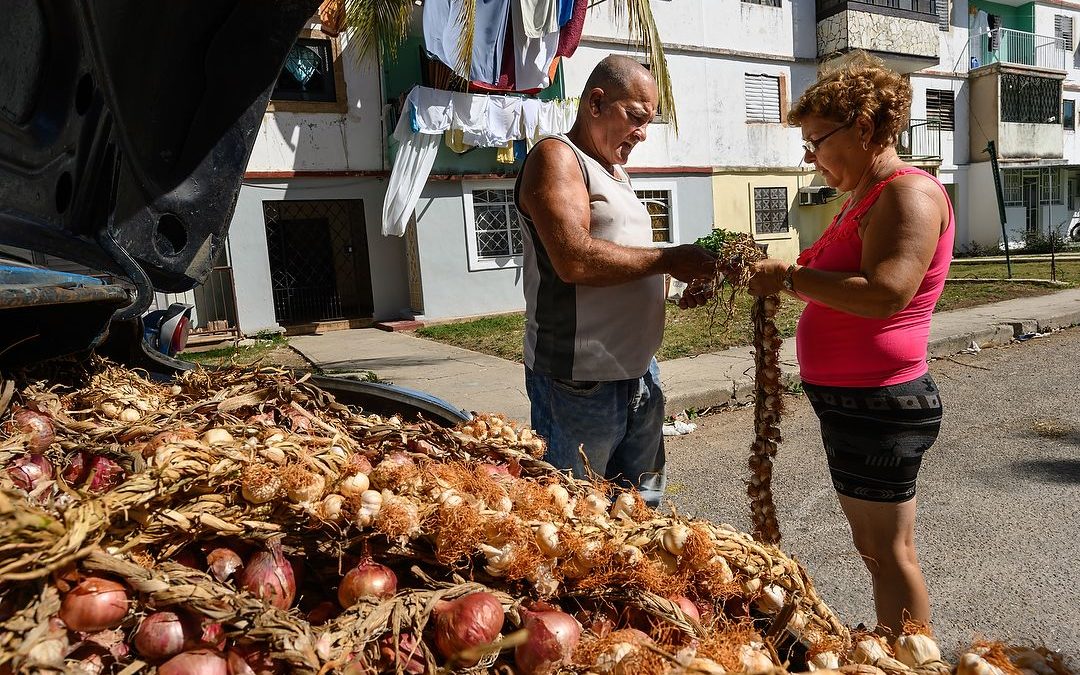I’ve just returned from leading two trips to Cuba, and the street photography there is amazing. To be honest, though, I have mixed feelings about street photography. I’m all for it when it’s done in a way that’s courteous to the subject or says something about the character of a place. But I’m completely against it when it’s done simply for shock value – “look, a homeless person!” So obviously I think there’s a right way and a wrong way to go about street photography. And that involves how you, the photographer, behave.
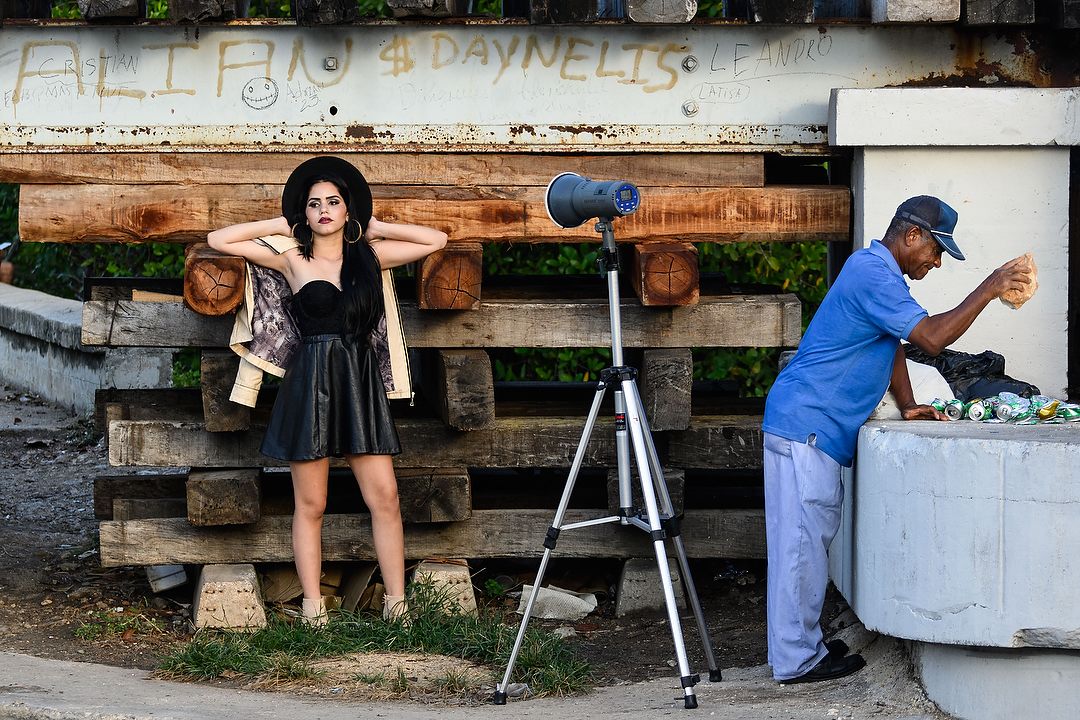
Matanzas was one of the cities we visited, and my favorite because it’s not a tourist spot. That meant we had great opportunities to photograph daily life, like this Quinceañera photo shoot next to a man flattening aluminum cans for scrap. Of course, we first asked permission of both the photographer and the young woman if it would be okay if we took some photos. Nikon Z 50, Aperture Priority, Sunny white balance, ISO 400, 1/400 at f/5.6 in Matrix metering, -0.3 EV, Nikkor VR Zoom 70-300mm f/4.5-5.6 lens at 120mm.
For street photography involving people, I think of photos as either showing a connection between the photographer and the subject, or “fly on the wall” photos. For pictures that show a connection, that usually happens through eye contact, after I’ve approached someone and asked if I can take their picture. If they agree, then I start. Sometimes that results in a flat expression, other times it’s a smile. And still other times, I may ask them to continue doing what they were doing, ignoring me. Or, I might simply keep taking pictures until they look away or go back to what they were doing. The most important thing here, though, is that I’ve asked permission. I want the intimacy of being close, with a wide-angle lens. That gives a special feeling to the photo, and I wouldn’t dream of doing that any without permission. There are street photographers whose style is to be aggressive, to try and elicit a reaction by essentially attacking the subject with their camera. I think that’s the height of rudeness, and makes all of us look bad.
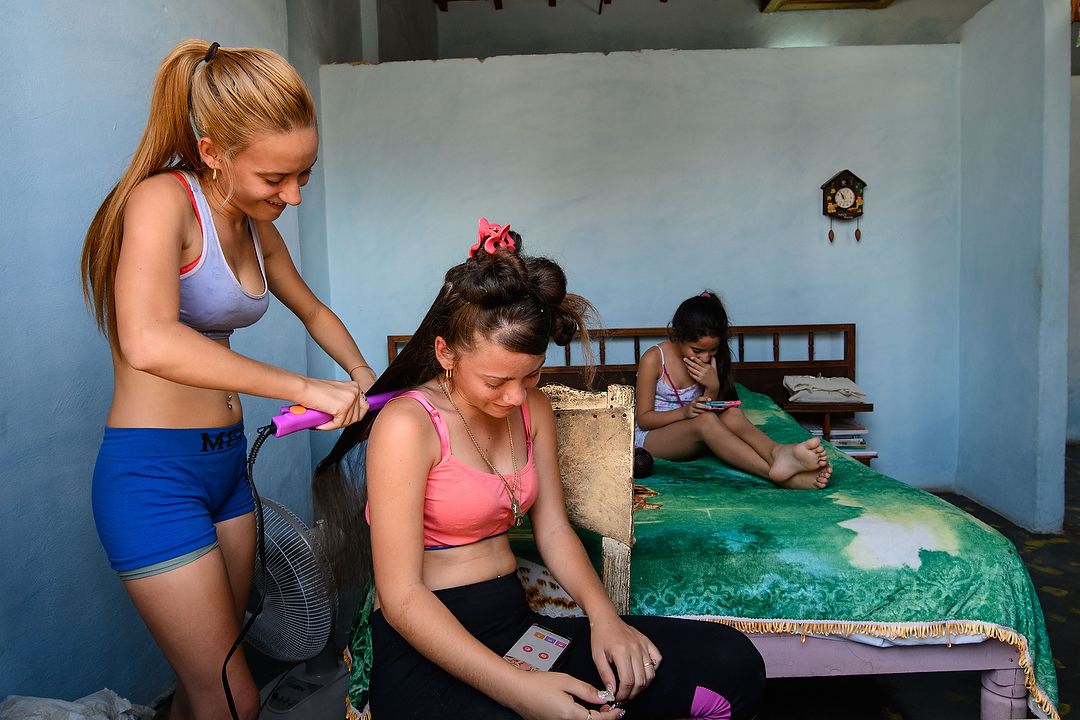
Most homes don’t have air conditioning, and open directly onto the street. This was the scene through an open window we walked by in Trinidad, so I asked the girls if they’d mind if we took some photos. They giggled and nodded yes. Nikon Z 7, Aperture Priority, Auto white balance, ISO 1000, 1/160 at f/5.6 in Matrix metering, -1.0 EV, Nikkor AF Zoom 18-35mm f/3.5-4.5G lens at 18mm.
The other behavior I’m opposed to is what I call the “shoot and run.” That’s a photographer who tries to sneak photos of people and then quickly walk away, avoiding any chance (or I’d say opportunity) for contact. Just because you have a camera and are away from home doesn’t absolve you of being polite. Imagine being outside your own home when a bus rolls up, drops off a load of foreign tourists who then immediately rush over and start taking pictures of you. Remember, you’re not in a zoo. Courtesy is always the proper behavior, even more so when you travel.
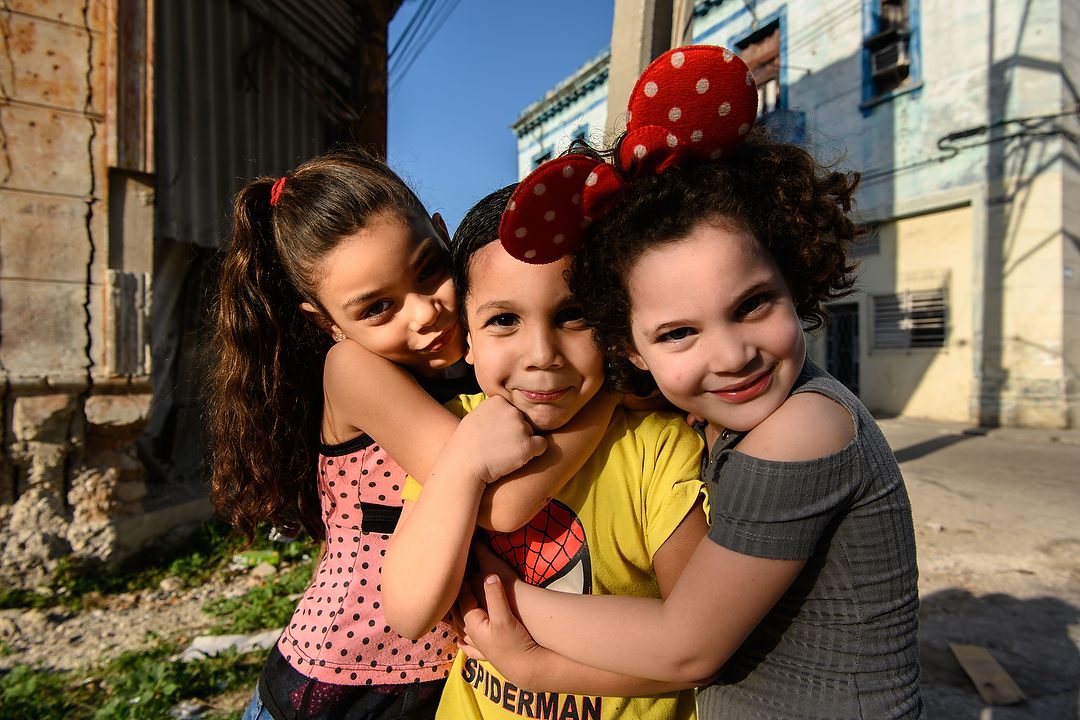
I was wandering around the streets near an art installation, and came across these three kids at play. I asked if they’d mind if I took a photo, and they hammed it up for the camera. Nikon Z 7, Aperture Priority, Sunny white balance, ISO 160, 1/400 at f/7.1 in Matrix metering, -0.3 EV, Nikkor VR Zoom 24-70mm f/2.8 lens at 24mm.
But what if you’d like to do people photography, but are shy about approaching people? Here’s one strategy for that. If you’re in a market, or anyplace people are selling things, look for a vendor with an expressive face, in good light or an interesting setting. Go up and buy something from them. That establishes a relationship. Then if you ask to take their picture, they’ll almost always say yes. When they do, don’t waste the opportunity by shooting just one frame. Work the scene, change your angle, move a bit closer and take several photos. That increases your chances of getting a really good one.

While visiting our guide’s home in Matanzas, a man came by selling garlic out of the trunk of his car. He got a kick out of the fact that we wanted to take photos. We didn’t need to buy any from him, but I’d have been happy to if it had meant being able to make photos like this. Nikon Z 7, Aperture Priority, Sunny white balance, ISO 100, 1/250 at f/11 in Matrix metering, -0.7 EV, Nikkor AF Zoom 18-35mm f/3.5-4.5G lens at 22mm.
Does this mean I’m saying that you always have to ask permission? No. There are two times where I generally don’t ask permission. The first is when there’s a moment happening and there’s no time to ask. In that case I’ll shoot, and if possible, explain and ask if that’s okay, afterwards. In those cases, I’m often not near the person/people and using a telephoto.
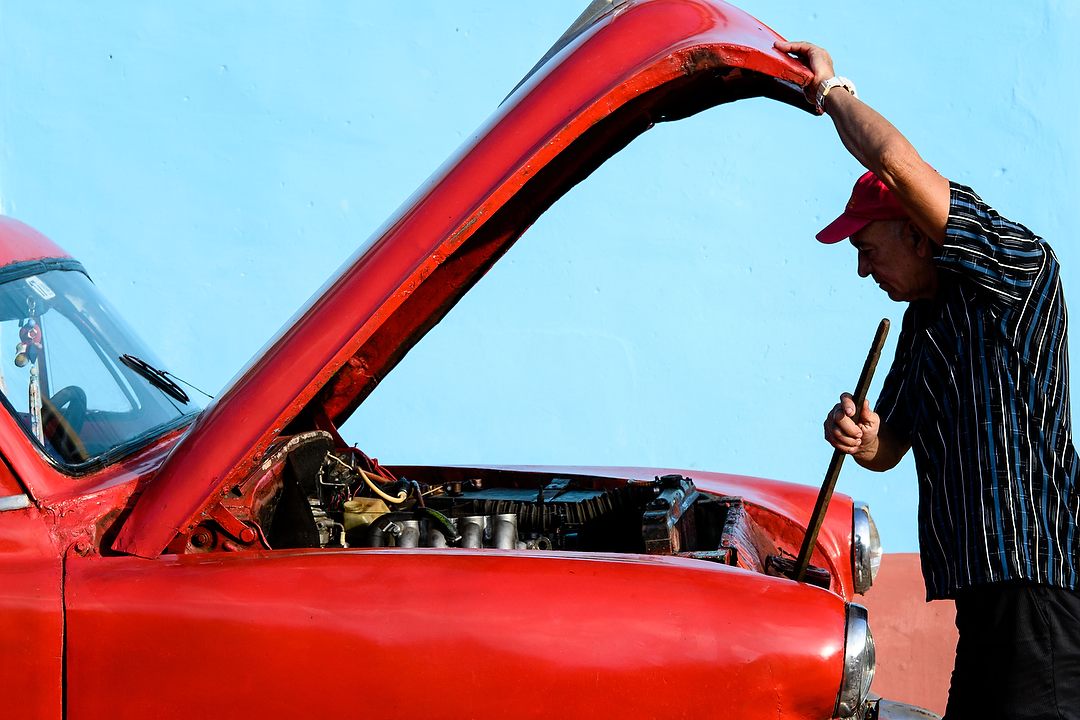
I was across the street from this man as he came out and started to work on his car in Trinidad. If I’d have been closer I’d have asked permission, but in this case I’d already shot the photos and he hadn’t noticed me, so I simply moved on. Nikon Z 7, Aperture Priority, Auto white balance, ISO 280, 1/500 at f/8 in Matrix metering, -0.3 EV, Nikkor VR Zoom 24-70mm f/2.8 lens at 60mm.
The other time is when I’ve found a good scene that just needs a subject moving through it. Usually that’s a spot that has good light and strong compositional elements. I figure out my framing and exposure, then put the camera to my eye and wait. Now I’m simply part of the scene, and people will usually ignore me. I do this a lot and it works really well. It’s what I call “fly on the wall” photography.
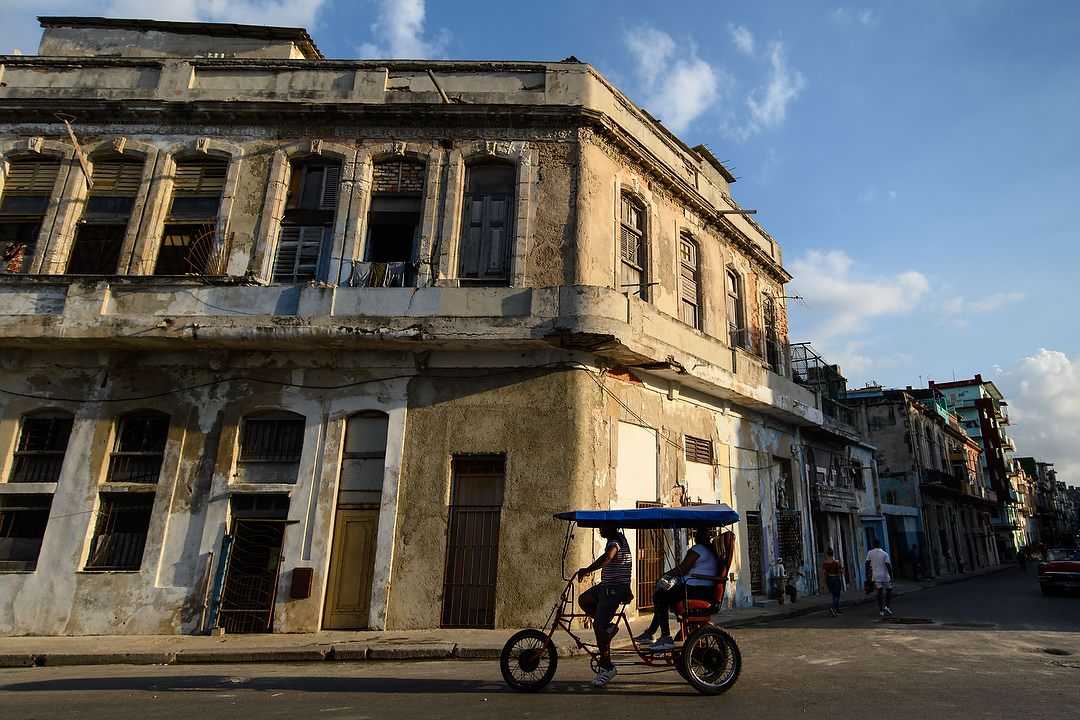
The Malecón in Havana is justly famous, and most people visit it. Just a block off of it, though, is an old neighborhood that’s rich with photo opportunities, especially with good light at the end of the day. This is one of those times I found a nice scene and just waited for a picture to happen. Nikon Z 7, Aperture Priority, Sunny white balance, ISO 250, 1/800 at f/6.3 in Matrix metering, 0.0 EV, Nikkor AF Zoom 18-35mm f/3.5-4.5G lens at 18mm.
Whatever approach you take to street photography, the important thing is to do it in a way that’s respectful of the people who live there. To me, people are a big part of telling the story of where I’ve been, especially on trips outside the U.S. Those people are often a big part of what makes that place unique, and if their lifestyle is much different than ours, then that too is worth showing. Finally, as humans, we’re naturally interested in other people. That’s why, even on wildlife workshops such as Africa or the Galapagos, I make an effort to have some portion of the trip include people photography.
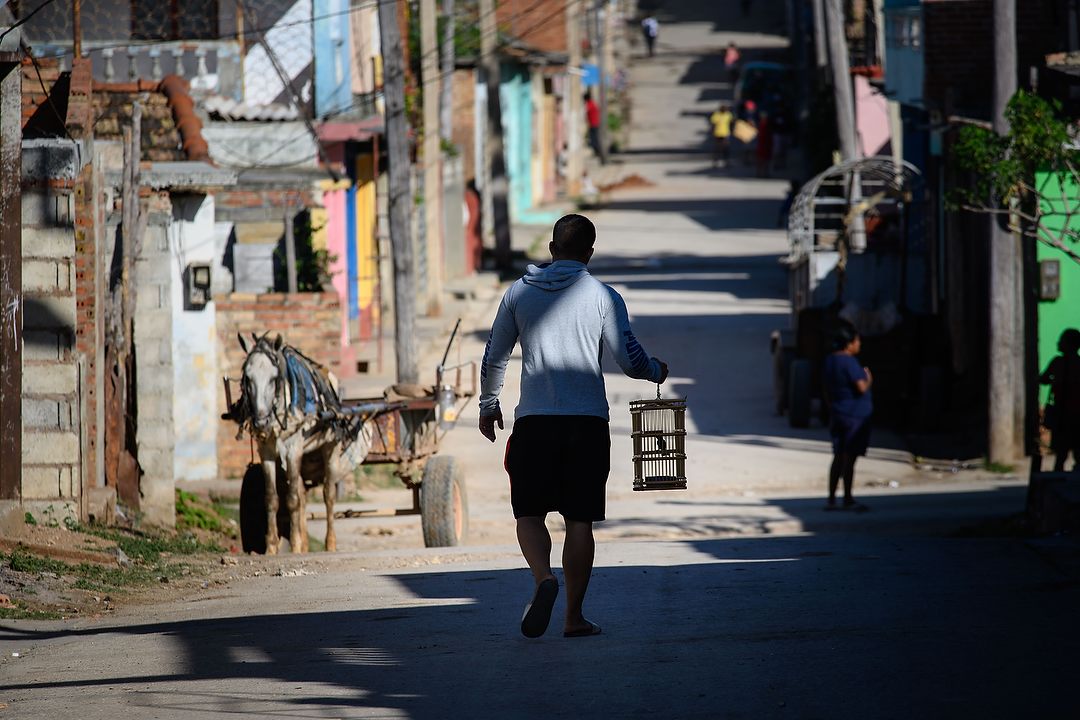
Songbirds are a popular pet in Cuba, and there are even singing competitions. It’s not unusual to see people taking them out in the morning and hanging the cage where the bird can have a view and fresh air. This is another example where light and lines make the photo, and no need to ask permission. Nikon Z 7, Aperture Priority, Natural Auto white balance, ISO 100, 1/500 at f/8 in Matrix metering, -1.0 EV, Nikkor VR Zoom 70-300mm f/4.5-5.6 lens at 300mm.
One of the things I love about photography is that there are so many different directions you can take with it. From landscape to wildlife to sports and more, the choices are plentiful and offer wildly different opportunities. The challenge to us, then, as photographers, is to make the most of those opportunities, and street photography is simply another one of them
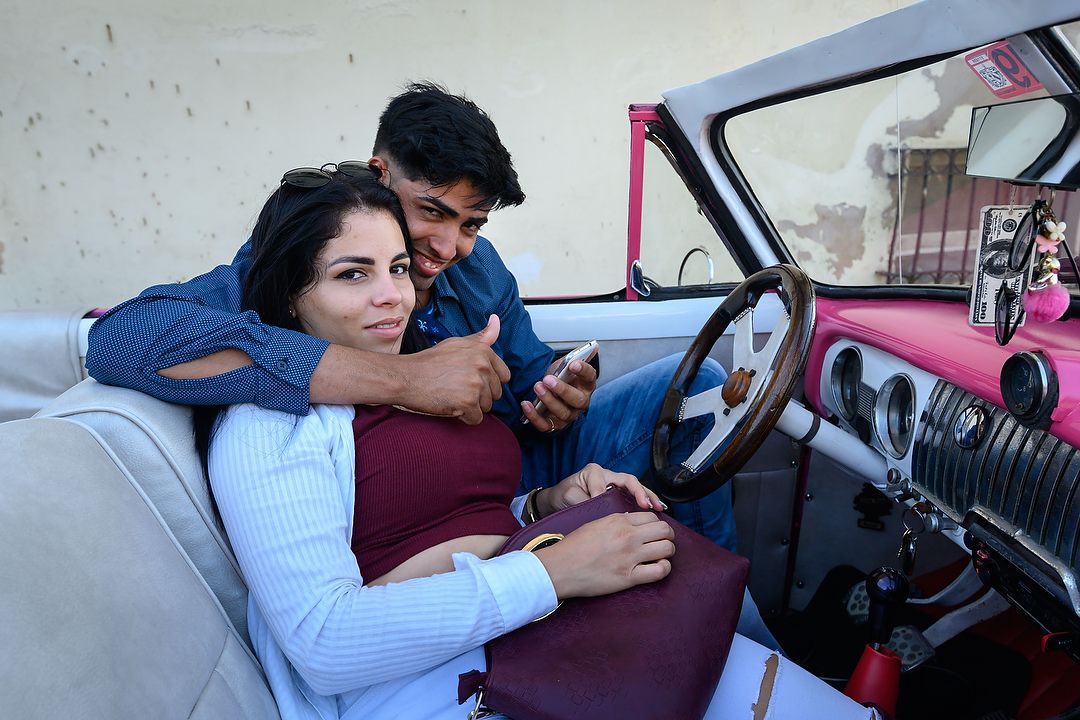
This couple was parked on a side street, hanging out, so I just walked up and asked if I could take their photo. I think the closeness, and eye contact, give it a completely different feeling than if I were across the street using a telephoto. Nikon Z 7, Aperture Priority, Sunny white balance, ISO 2000, 1/400 at f/5 in Matrix metering, +0.3 EV, Nikkor AF Zoom 18-35mm f/3.5-4.5G lens at 26mm.
(If you like this story, please share it with your friends and let them know about the links on photography that I post on my business Facebook page. I’m also on Instagram and Twitter, @reedhoffmann. And if you’re curious about the workshops I teach, you can find them here.)

